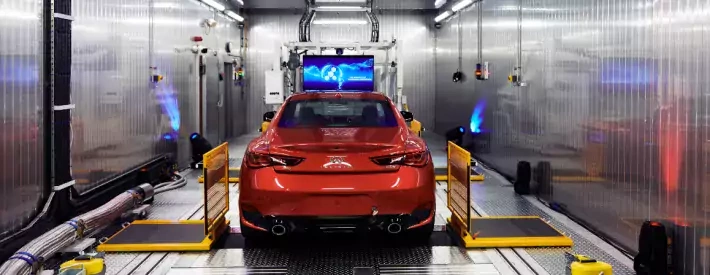All eyes are on new emissions regulations

The industry is holding it breath as it waits to see what Euro 7 emissions standards will be. Whatever the next stage of reducing CO2, PM and NOx levels coming out of vehicles’ tailpipes is, it’ll have a huge impact on the technologies integrated on light and heavy vehicles and the skills needed to work on them. Even more so if brake wear particle emissions are included in the latest batch of legislation.
The final Euro 7 requirements are likely to be outlined before the end of the year and come into force from 2025. But what’s likely to happen? The answer depends on who you speak with.
If you listen to the Association of Emissions Control by Catalyst (AECC) the call is for an ambitious plan to reduce emissions from combustion engine vehicles using technologies that you may already be aware of.
“AECC has provided robust scientific data on emissions reduction performances of state-of-the-art emission controls applied to modern ICE powertrain systems. The least, we would expect is that political choices made in the final proposal, link closely to scientific findings. We recently demonstrated that novel emission control system layouts, including close-coupled catalysts and using active thermal management can substantially reduce the remaining pollutant emissions from ICE-equipped vehicles,” said Dirk Bosteels, AECC Executive Director in an open letter.
Whatever the emissions limits are the key for the industry will be making sure they can be met in an economically viable manner, and it’s why the European Automobile Manufacturers’ Association (ACEA) wants to see a framework introduced to help with the transition from Euro 6 to the new legislation, keeping in mind the wider context of the massive transition automotive is going through to deliver carbon-neutral mobility. But it’s also keen to see the latest legislation remain robust.
ACEA’s three suggested pillars for Euro 7 legislation includes:
- An ambitious timeframe of 2025/2026
- Challenging 50% reductions in the key criteria pollutant emission limits (these will require R&D effort and hardware changes for new vehicles)
- Minimal changes to the current well-functioning Euro 6/VI test procedures to ensure that the ambitious timeframe can be fulfilled
It won’t be long until we find out what the latest batch of emissions legislation holds for the industry and the impact it’ll have on vehicles and the skills required to work on them. How far beyond current limits the European Commission decides to go isn’t known – and delays to the process haven’t helped calm people’s nerves – but we do know it’s the next steady step to reducing automotive impact on the environment.




